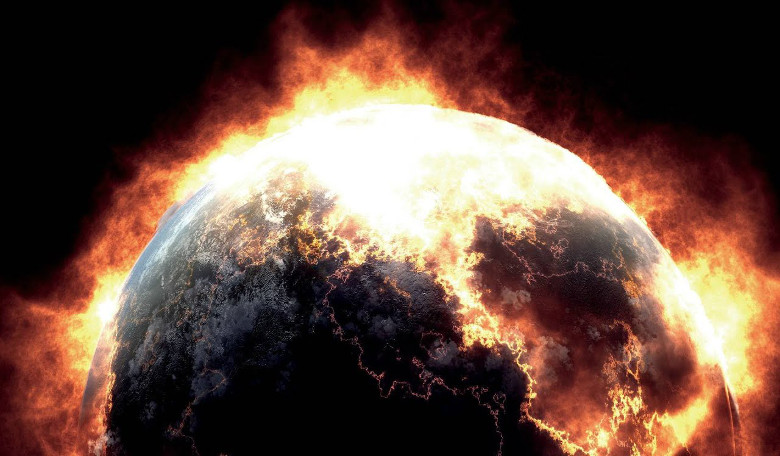The discovery of a very young, 31 kilometre-wide impact crater beneath the Greenland ice sheet which impacted Earth toward the end of the Pleistocene epoch, is being linked to a devastating event that set the Earth on fire, triggered climate change and wiped out a significant portion of megafaunal nearly 13,000 years ago.
Around 14,500 years ago, huge areas of the northern hemisphere were covered by ice sheets and global temperature were a lot cooler than they are today. Slowly though, the Earth began to warm up from a cold glacial world to a warmer interglacial state.
Partway through this transition however, temperatures in the Northern Hemisphere suddenly plummeted and the region returned to near-glacial conditions, on timescales of decades, not hundreds or thousands of years.
This period has been extensively studied and is known as the Younger Dryas, named after a flower (Dryas octopetala) that grows in cold conditions and that became common in Europe during this time.
Although it is one of the most well known examples of abrupt climate change on Earth, its origin is still under debate. Many think it was caused by a decline in the strength of deep currents that transports warm water from the Equator towards the North Pole; the Atlantic meridional overturning circulation (AMOC).
But there is another train of thought, which isn't as well liked, that favours an impact scenario instead. Called the Younger Dryas Impact Hypothesis, this theory postulates that a fragmented comet slammed into the Earth causing widespread wildfires (biomass burning), rapid climatic changes, megafaunal extinctions and a sudden disappearance of human artifacts.
Although the vast majority of evidence to support this idea has been found in the northern hemisphere, the discovery of a "black mat" layer found in sedimentary rocks at a well-known paleontological and archaeological site known as Pilauco Bajo, in the city of Osorno in Southern Chile, helps bolster the idea that not only did a comet strike Earth in the Younger Dryas period, but the affects were far more reaching than previously thought.
Uncovered by geology professor James Kennett at UC Santa Barbara and colleagues, the black layer is bound in rocks dated 12,800 years in age. “We have identified the Younger Dryas Boundary (YDB) at high latitudes in the Southern Hemisphere at near 41 degrees south, close to the tip of South America," Kennett said. “This is a major expansion of the extent of the YDB event."
The layer is striking not just because it coincides with the Younger Dryas Boundary event but also because it contains microscopic spherules interpreted to have been formed by melting due to the extremely high temperatures associated with an impacting body striking the planet. The layer containing these spherules also show peak concentrations platinum and gold; elements that are rarely found in nature.
"Among the most important spherules are those that are chromium-rich," Kennett explained. The Pilauco site spherules contain an unusual level of chromium, an element not found in Northern Hemisphere YDB impact spherules, but in South America. "It turns out that volcanic rocks in the southern Andes can be rich in chromium, and these rocks provided a local source for this chromium," he added. "Thus, the cometary objects must have hit South America as well."
Evidence of large scale biomass burning around this time has been collected by other chilean scientists in the region who report a "very large environmental disruption at about 40 degrees south." These include among other things, micro-charcoal and signs of burning in pollen samples collected at the impact layer.
"The plant assemblages indicate that there was an abrupt and major shift in the vegetation from wet, cold conditions at Pilauco to warm, dry conditions," Kennett said. “It's by far the biggest burn event in this region we see in the record that spans thousands of years.”
Our planet is feeling the affects of a changing climate right now as wildfires rage across the globe from California to Australia, however we know that a comet impact is not to blame. The same cannot be said for Earth 13,000 years ago but the crater beneath the Greenland ice sheet and the “black mat” layer convincingly point to a tumultuous era caused by an impact.
"This is further evidence that the Younger Dryas climatic onset is an extreme global event, with major consequences on the animal life and the human life at the time," Kennett said. "And this Pilauco section is consistent with that."











